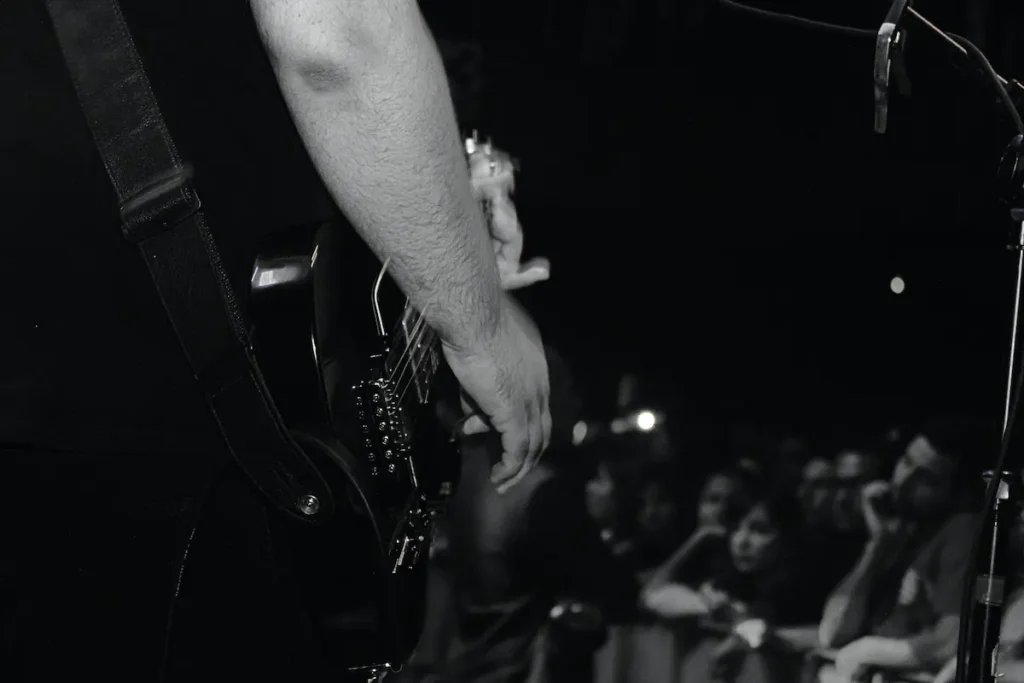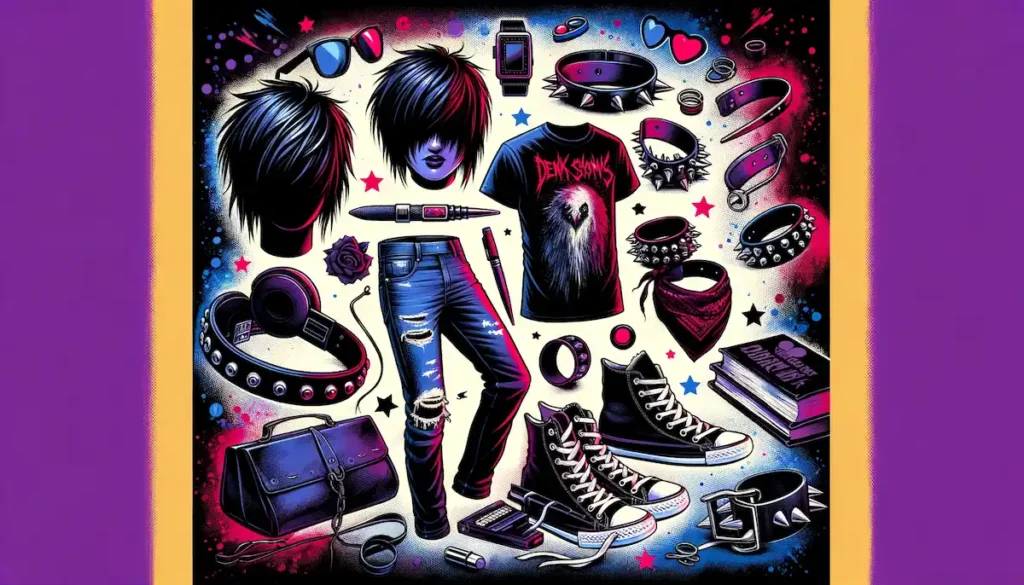There’s an undeniable rawness in emo music, a visceral tug that calls out to the depths of our feeling selves. It’s a genre that has grown, twisted, and turned through the years, but at its heart, it’s always stayed true to the ethos of emotional expression. And what better way to channel those turbulent sentiments than through the six strings of a guitar?
The guitar strumming in emo music isn’t just about keeping rhythm; it’s about conveying a story, a struggle, a moment of catharsis. It’s about the communication between musician and instrument, the synergy that creates something that resonates not just in the ears, but in the soul. This is about mastering not just a technique, but an art form.
The Emo Strum: More Than Just Down and Up
Think about the last time a song made you feel something profound. Chances are, the guitar had a lot to do with it. In emo music, the strumming pattern is a language of its own. It’s staccato and broken when mirroring the jagged edges of angst, or it’s flowing and relentless, echoing the steady stream of consciousness in a lyrical confession.
Feeling the Rhythm
Strumming is rhythm. But it’s not the metronome-like, mechanical rhythm you might be thinking of—it’s the rhythm of a beating heart. To truly master emo guitar strumming, you need to feel each beat. It’s not about perfection; it’s about authenticity. So before you even think about patterns, spend time with your instrument. Strum openly, without intention, and let the rhythm find you.
The Downstroke: A Declaration
In many emo songs, the downstroke is a declaration, a start of something urgent and demanding to be heard. It’s heavy, laden with emotion. When you strum down, let it be more than a motion—make it a statement. Whether it’s the opening chord of a classic by Jimmy Eat World or the raw beginning of an American Football tune, that downstroke is where you set the tone.
The Upstroke: A Sigh
Contrastingly, the upstroke often feels like a sigh, a lighter touch that can bring a sense of relief or reflection. It’s the aftermath of the declaration, the breathing space. The upstroke in emo strumming is essential in creating dynamics, the push, and pull that keeps the listener hanging on every note.
Palm-Muting: The Whisper
Palm-muting is like the whisper in a conversation—it draws you in closer. By resting the side of your palm on the strings as you strum, you create a muffled sound that’s full of tension and anticipation. It’s a technique used often in emo music to build up before a powerful release.
Strumming Patterns to Practice
Now let’s talk patterns. While emo music is diverse, certain strumming patterns are unmistakably characteristic of the genre. Here are a few to get you started:
The Emo Anthem Strum
This is your bread and butter, the classic down-down-up-up-down-up. It’s versatile and can be played fast or slow, soft or hard, but it always carries that quintessential emo feel.
The Introspective Strum
For those quieter moments, the pattern might simplify to a thoughtful down-down-down-down, each strum a contemplative step deeper into the soul of the song.
The Breakdown Strum
And then there’s the breakdown, often a series of aggressive, palm-muted downstrokes that build up to an emotional crescendo. It’s not just about playing louder or faster; it’s about pouring every ounce of feeling into each strum.
The Emotional Palette
What sets the emo strumming style apart is its emotional palette. Each technique, each pattern you learn, is a color you can use to paint your musical picture. As you practice, remember that it’s not about imitating exactly what you hear on your favorite tracks. It’s about interpreting, about finding your own emotional truth within the music.
Bringing It All Together
To master the art of emo guitar strumming, you need to bring all these elements together in harmony. Start slow, with a metronome if you need it, but gradually let go of the rigid timing and start to play with feeling. Listen to a lot of emo music, from the gritty pioneers of the ’90s to the polished sounds of today, and notice how the strumming patterns serve the song’s emotion.
Tips for Practicing
- Start Slow: Begin with a slow tempo and work your way up. Accuracy and emotion are more important than speed.
- Use a Metronome: Initially, a metronome can help you keep time but don’t become dependent on it. Eventually, let the song’s emotion guide your tempo.
- Listen and Emulate: Listen to emo classics and try to play along. Notice how the strumming changes with the mood of the song.
- Feel First, Technique Second: Always prioritize the feeling you want to convey. Technique serves emotion, not the other way around.
- Record Yourself: Recording your practice sessions can help you hear where you need to improve and where you’re nailing it.
The Journey Is Yours
Emo guitar strumming is as much about the journey as it is about the destination. It’s a way to connect, to express, and to feel. So, grab your guitar, let your guard down, and strum with all the passion, the pain, the hope, and the heartbreak that emo music embodies. This is your story, your emotion, your art. And there’s no one way to do it—only your way.


